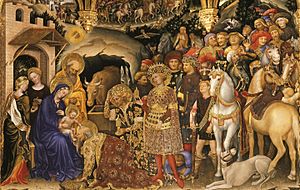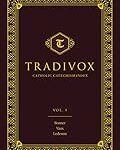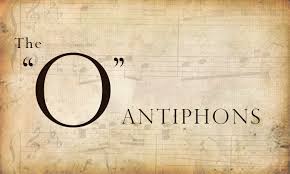On entering the house, they saw the child with Mary his mother; and they knelt down and paid him homage. Then opening their treasure chests, they offered him gifts of gold, frankincense and myrrh (Mt. 2:11).
The celebration of the Solemnity of the Epiphany completes our commemoration of the Mystery of the Incarnation which Christmas celebrated and The Announcement of Easter and the Moveable Feasts expresses our desire and intention to permeate the whole year with the grace of the Mystery of Christ as we celebrate the great Feasts of our faith. Like the Magi we resolve to journey through the year intending to live by the light of Christ, the Saviour of the world. The radiance of Christ the Light of the world, which today’s Feast of the Epiphany proclaims, is a Light that cannot be overcome by any power, earthly or spiritual. In him was life and the life was the light of men. The light shines in the darkness, and the darkness has not overcome it (Jn. 1:4-5). The Epiphany celebrates the manifestation of Christ Our Lord to the whole world for the Gentiles have become fellow heirs, members of the same body, and sharers in the promise in Christ Jesus through the Gospel (Eph. 3:6); and this manifestation continues through our humble witness to the truth of the Gospel. The work of evangelization continues; indeed, it must continue in view of the darkness and the moral confusion afflicting the world.
Wise men from the East came to Jerusalem, asking, ‘Where is the child who has been born king of the Jews? For we observed his star at its rising, and have come to pay him homage’ (Mt. 2:2). St. Jerome, the great biblical scholar of the early Church tells us that these wise men or Magi were experts in astronomy and the science of nature. They belonged to the great tradition of astronomy that had developed in Mesopotamia over the centuries and continued to flourish. They had doubtless heard of the prophecy of the Gentile prophet Balaam: A star shall come forth out of Jacob and a scepter shall rise out of Israel (Num. 24:17). Their humble courage and desire for the truth enabled them to bend down before the Child of poor people and to recognize in Him the promised King. St. John Chrysostom says that they sought a heavenly king, though they found in Him no sign of royal pre-eminence, yet content with the testimony of the star alone, they adored: for they saw a man and they acknowledged a God (Cited in ST 3a q. 36, a. 8, ad 4.).
On entering the house, they saw the child with Mary his mother; and they knelt down and paid him homage. Then opening their treasure chests, they offered him gifts of gold, frankincense, and myrrh (Mt. 2:11). The treasures of the Epiphany affirm by implication the true nature of the Incarnate Son: Gold as to a king, frankincense as a sacrifice to God, myrrh as embalming the body of the dead (St. Gregory the Great). The Holy Infant is the one eternal Son in two natures, the Divine Saviour, at once kingly and priestly, who comes to conquer Satan’s pride and atone for Adam’s sin. This is more than a child. He is the Word Incarnate. They knelt down and paid him homage. Their simple gesture is instructive for every succeeding generation in the Church, including ours; and perhaps, especially for ours. The Magi provide us with a noble example of devotion to the Incarnate Son in His several dwellings: to Jesus in the womb and arms of Our Lady – Ad Jesum per Mariam, To Jesus through Mary; to Jesus in the Sacred Host, to Jesus in His living word, and to Jesus in the hearts of His Saints. The kneeling down of the Magi is especially instructive and necessary. We, too, should kneel down when we enter the church, the House of God where we find the Incarnate Son substantially present, yet humbly hidden, beneath the sacramental species in the Tabernacle. Of all the ways in which He is present on earth, this is the most excellent and the most deserving of our love. This is why Our Eucharistic Lord is deserving of the greatest reverence and why the Tabernacle must have the highest place of honour in our churches.
The Magi teach us the lesson of humility before the Mysteries of God but they are not alone in doing this. As we contemplate the nativity scene, what we have before us is a mosaic of humility. Have you ever wondered why invariably there is an ox and a donkey in this scene? As you know, it is to St. Francis of Assisi that we owe the tradition of the crèche. He was inspired to include these lowly creatures in the scene by the words of the prophecy of Isiah: An ox knows its owner, and an ass, its master’s manger; But Israel does not know, my people has not understood (Is. 1:3). The prophet contrasts animals with man. Even beasts have the humility to acknowledge their master. Why can’t man acknowledge his Lord? This refusal to acknowledge the Lord is the source of all human misery.
The mosaic of humility that we lovingly contemplate – the humility of the animals, the angels, the shepherds, the Magi, and of Our Lady and of St. Joseph – they are just reflections of the humility of God Himself who humbles Himself to share our created human nature so that we might become sharers of the divine nature. More than any other virtue we ought to foster in ourselves first and foremost an attitude of profound humility before Our Saviour Who comes to us in Word and Sacrament. Humility is a foundational virtue which keeps us from the folly of human pride, the source of so much misery. This folly has reached such heights in our time that even empirical, scientific truth is sacrificed on the altar of ideology and facts are ignored in the interests of political correctness. In the madness of a world drunk with pride, what is needed most is the witness of a humble life lived in peaceful union with our humble Saviour.
The Christ Child Whom we contemplate invites us to conform ourselves to the Mysteries of His life: not only His Passion, Death and Resurrection but also His Infancy and His own humility. Truly I say to you, unless you turn and become like little children, you will not enter the kingdom of Heaven (Mt. 18:3). May it never be said of us that we have become so sophisticated and proud, that we are blind and impervious to childhood’s dignity, and its awe and wonder especially in the presence of God both in His creation and in the sacred rites of the Church, rites that our cherished heritage and patrimony. For countless generations these rites shaped the hearts and minds of devout Catholics; and we resolve today to protect and foster them so that our humble, reverent worship may make us as it did our forefathers: truthful and respectful of the godly order established by our Heavenly Father; so that in our days too righteousness may flourish and peace abound (Ps. 72).











